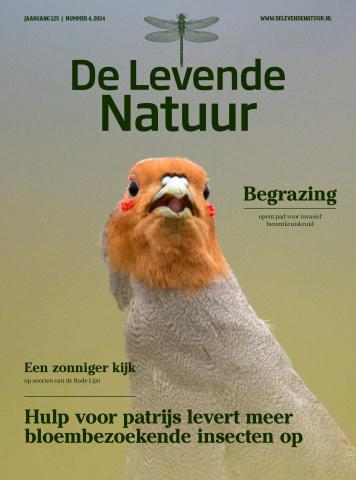De Levende Natuur nummer 4 van 2024 (English summary)
Afbeelding

More flower-visiting insects in former farmland areas
We investigated populations of flower-visiting insects in the demonstration and reference sites of the Partridge project in the Netherlands during 2020 – 2022. Communities of bees, syrphid flies and butterflies were more diverse but not significantly more numerous in the demo sites than in the references. Insect numbers were higher in agri-environmental habitat measures that in crop fields and landscape elements (such as road verges, ditches and dikes). The occurrence of some rare species points toward the importance of linking agri-environmental measures on farms to natural elements in the surrounding landscape, in order to create diverse and sturdy wildlife populations in farmland areas.
Intensive grazing increases invasibility for exotic species
Invasions by exotic species can strongly affect ecosystems. Theoretically, species-rich communities are less invasible than species-poor communities. Furthermore, ecosystems hypothetically exhibit the highest biodiversity under intermediate disturbance intensity. We investigated correlations between native vegetation diversity and density and structure of the poisonous South-African ragwort (Senecio inaequidens) through vegetation relevés made in 2022 in the Amsterdam Water Supply Dunes and National Park South-Kennemerland. Because of deer exclosures, both reserves have areas with low to high grazing pressure. Ragwort population density correlated strongly with vegetation structure; significantly higher densities were found in dry places with a lot of bare sand and high moss cover and, contrary to expectations, high plant diversity. This is probably because many small winter annuals also prefer these open vegetations. The open vegetation structure that is created by very intensive grazing can thus increase invasibility for exotic species. When grazers are excluded, ragwort populations will ultimately go extinct.

